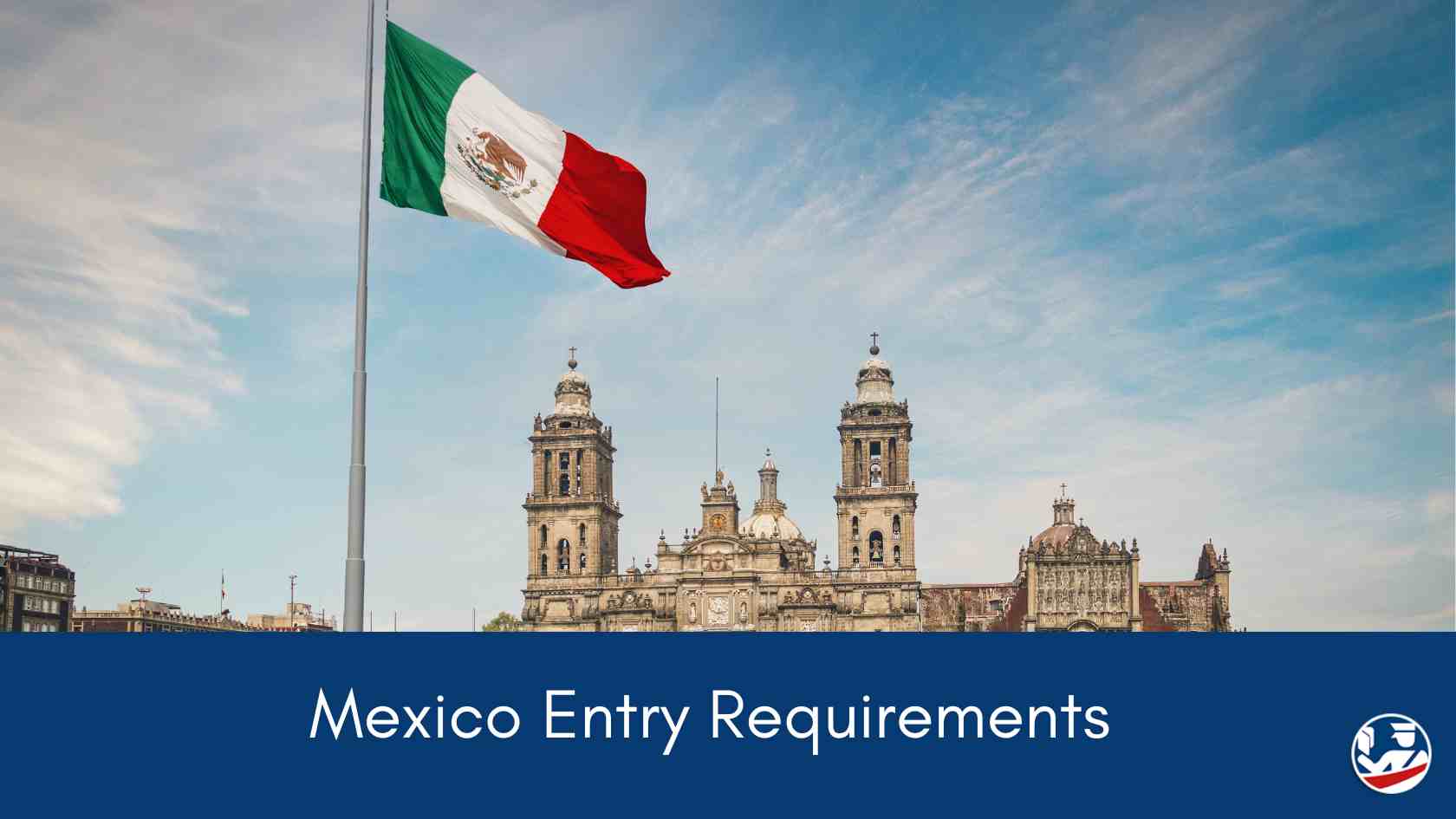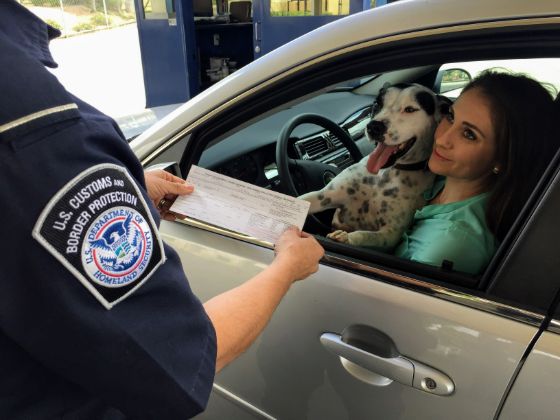
Do you need a passport to go to Mexico?
It is one of the most common questions we have received over the past 20 years helping readers like you with their travel document needs:
The simple answer is yes. U.S. citizens are required to present a valid passport book or passport card when entering Mexico.
There are also some alternative travel documents that can be used in place of a passport depending on where and how you plan to cross the U.S.-Mexico border.
Both the U.S. Department of Homeland Security and Mexican authorities have made a real effort to strengthen border security. As such, there are strict rules about what is considered a valid travel document to visit Mexico.
⚠️ Current Processing Time Alert: Standard government processing is currently estimated at 4-6 weeks.
If you are traveling within the next 14 days, standard mail-in services may not arrive in time.
Check availability for 24-48 hour private expedited services here »
Documents for Travel to Mexico
The following items are considered valid identification documents for traveling to Mexico:
- A U.S. passport book (required for all international air travel to Mexico)
- A U.S. passport card
- An enhanced driver's license (EDL)
- A trusted traveler program card (NEXUS, SENTRI, FAST, or Global Entry)
- An enhanced tribal card (ETC)
- A military identification card (only for members of the U.S. armed services on official maritime business)
- A Military ID with official orders that require travel to Mexico or through the country's borders
The items listed above are all considered WHTI-compliant documents. While a passport book is the only acceptable document for international air travel, the rest of these options can be used at most land and sea ports of entry to Mexico and back into the United States.
Note: Not every port of entry has the RFID card readers required to accept any WHTI compliant document other than a passport book. When planning Utravel to Mexico, travelers should be sure they have the proper type of identification documents accepted by the customs and border protection services at their planned port of entry.
Documents Not Accepted for Travel to Mexico
The following documents are not acceptable substitutes for a valid passport:
- A birth certificate
- A standard driver's license
- An automobile registration
- A naturalization certificate
- Any other government-issued photo ID that is not expressly a WHTI compliant document
While many of these are required documents for getting a passport, none of them are considered a valid travel document on their own for entering Mexico.
Currently, a valid passport book is the best option for all U.S. citizens traveling to Mexico. It is the most reliable and versatile way to travel internationally. If you have a valid passport book, you can be sure it will be accepted at every U.S. Customs and Border Protection (CBP) and Instituto Nacional de Migración (National Migration Institute) checkpoint.
Regardless of how you plan to travel to Mexico, U.S. citizens who do not have a passport book or a passport card should apply for one well in advance of their trip.
If you are planning a trip to Mexico soon, be sure to consider expedited passport processing options. In some cases, registered passport courier services can help you get a passport in-hand in as few as 24 hours.
Our expert recommendation for passport expediting services goes to Rush My Passport. Their courteous and professional team has offices across the U.S. at the ready to help you get a new passport or renew an existing one quickly and without hassle. With their help, you can save both time and money compared to the costs of getting a rushed passport on your own.
It is worth noting that there are some alternatives to a passport book that will allow U.S. citizens to enter Mexico and reenter the U.S. However, there are limits to how and where these can be used. For example, none of these alternatives is acceptable for air travel to Mexico or other countries.
Using WHTI Documents to Cross the Mexico Border

The Western Hemisphere Travel Initiative (WHTI) was established in 2007 to both strengthen border security and make it simpler to travel between Mexico, Canada, Bermuda, and some Caribbean Islands. The program is ideal for U.S., Mexican, and Canadian citizens who must regularly travel back and forth across land or sea border crossings for work, family, or other reasons.
The most common of the WHTI compliant documents is the passport card, but they all essentially work the same way. Presenting one of these documents to Mexican immigration authorities will allow you to enter Mexico by land or by sea.
The same works in reverse. WHTI-approved travel documents meet the entry requirements for U.S. citizens seeking passage back into the United States through most Customs and Border Protection checkpoints.
So, while U.S. citizens must still always present a valid passport or valid identification when crossing back and forth across these borders, the WHTI compliant documents make life more convenient for frequent travelers in a number of ways:
- RFID chips embedded in WHTI documents speed up the process of crossing the border by land or sea.
- Passport books have a limited number of pages. Without WHTI alternatives, travelers who cross North American land and sea borders often would need to renew passports more frequently. This would cost travelers a lot of time and money.
- Passport books are bulky. Conversely, a passport card, enhanced driver's license, SENTRI card, or other card issued as part of the Trusted Traveler Program can fit in a standard wallet or purse just like any credit or debit card.
- Document condition matters. Passports and all pertinent travel documents must be in good condition. Mexican immigration may not accept damaged passports, and may require travelers to return to the United States.
WHTI documents are more rigid and durable than even the most recent version of the U.S. passport book. That said, significantly damaged WHTI travel documents will be rejected the same way a damaged passport book would be.
If your international travel plans are focused solely on WHTI countries (and don't involve international air travel), this may be a great way to travel to Mexico without a passport book.
Essential Travel Resources for Your Next Adventure
- Travel Insurance – Protect your trip with trusted, affordable coverage for medical emergencies, cancellations, and more.
- Flights & Hotels – Find the best deals on flights and accommodations worldwide with Booking.com’s powerful search engine.
- Tours & Local Experiences – Discover unforgettable experiences with top-rated local tours and activities in every destination.
- eSIMs & Phone Plans – Stay connected abroad with affordable eSIM data plans—no physical SIM card required.
- Luggage & Travel Gear from Amazon's Best Sellers – Shop the most popular backpacks, luggage, and travel accessories travelers swear by.
- Rocket Languages Award-Winning Courses – Learn a new language fast with immersive, self-paced courses loved by travelers.
- Registered Passport Courier Services – Need your passport fast? Use trusted expediters to save time and avoid stress.


